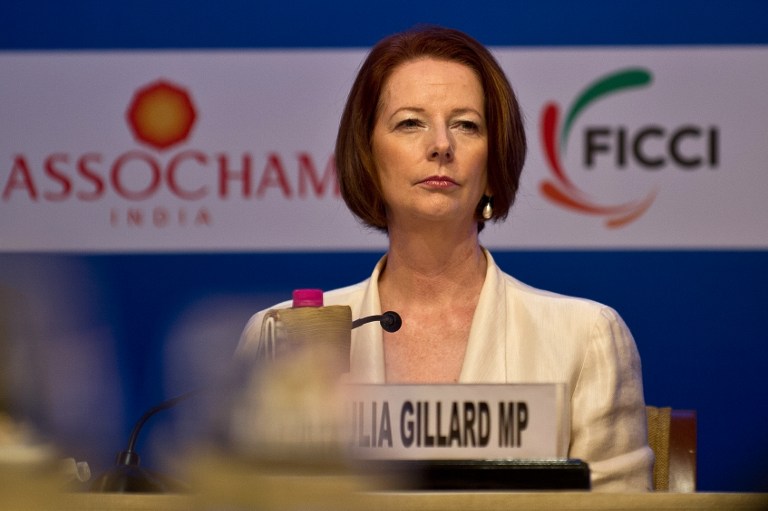SUMMARY
This is AI generated summarization, which may have errors. For context, always refer to the full article.

SYDNEY, Australia – Australia will make “Asia literacy” a key plank of its future education strategy with the goal of every local school being partnered online with one from the region by 2025, the government said Monday, October 29.
Prime Minister Julia Gillard said she was going to prioritize Asian languages as part of an ambitious plan to get Australia into the world’s top 10 wealthy economies in the next 13 years by boosting links to China and its neighbors.
The plan, unveiled Sunday and titled “Australia in the Asian Century”, contains a number of lofty goals focused on education and business with key Asian partners China, South Korea, Japan, Indonesia and India.
Gillard said Australian students would have “priority” access throughout their schooling to Mandarin, Hindi, Indonesian and Japanese languages, vowing to link every school with an Asian partner for online classes by 2025.
“I’m going to put access to Asian languages at the centre of (our) national school improvement plan,” she told ABC radio Monday, promising a “far broader and far more systematic” approach to Asian language learning.
Gillard said it was essential to send “the right message to our kids about how important it is for their future and the careers that they will choose for them to have Asia language capability and general Asian literacy”.
According to the policy paper, less than six percent of Australian students studied Indonesian, Japanese, Korean or Mandarin in their final year of school in 2008, the most recent available figures.
“The capacity for Australians to build deeper ties with Asia will be hampered if there is not an increase in proficiency of languages other than English,” the paper warned.
“Relying on the language capabilities of Asian-Australians for all of Australia’s relationships and engagement will not be adequate. Proficiency in more than one language is a basic skill of the 21st century.”
The prime minister said Australia’s national broadband network (NBN) — a huge project working to connect 93 percent of homes to superfast Internet by 2017 — would be key to connecting with Asian classrooms and teachers.
“We live in an age of different learning possibilities and choices,” she said.
“The exchange on the NBN… can truly be two-way, where the language teacher is interacting with every child, and we want those children interacting with kids in a school in Asia.”
Gillard said she had already seen one such program in action, with an Australian and South Korean school holding joint online sessions and students continuing their friendship outside of lessons on social media networks.
“Kids (are)… actually genuinely getting to know each other and something about each other’s lifestyles,” she said.
“And I think if you can do that then you can help inspire the passion of children.”
According to the latest population census, conducted last year, 76.8 percent of Australians only speak English at home.
Mandarin is the most common language after English, spoken in 1.6 percent of homes, followed by Italian (1.4 percent), Arabic (1.3 percent), Cantonese and Greek (both 1.2 percent), according to the Australian Bureau of Statistics. – Amy Coopes, Agence France-Presse
Add a comment
How does this make you feel?
There are no comments yet. Add your comment to start the conversation.